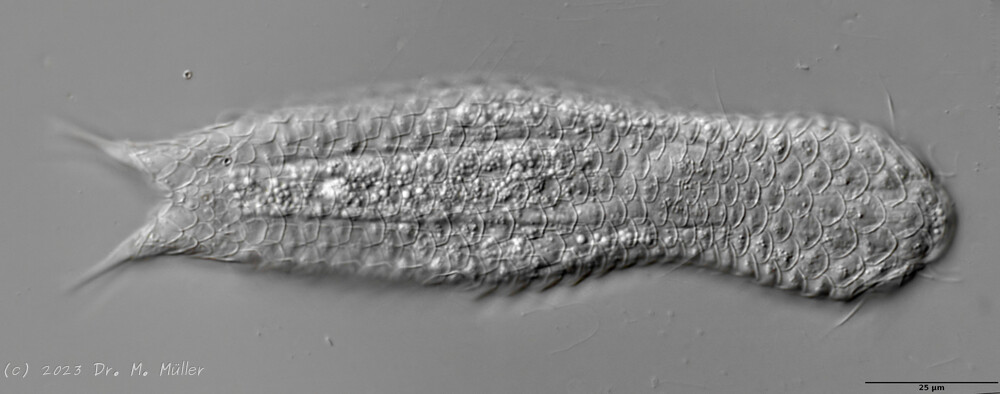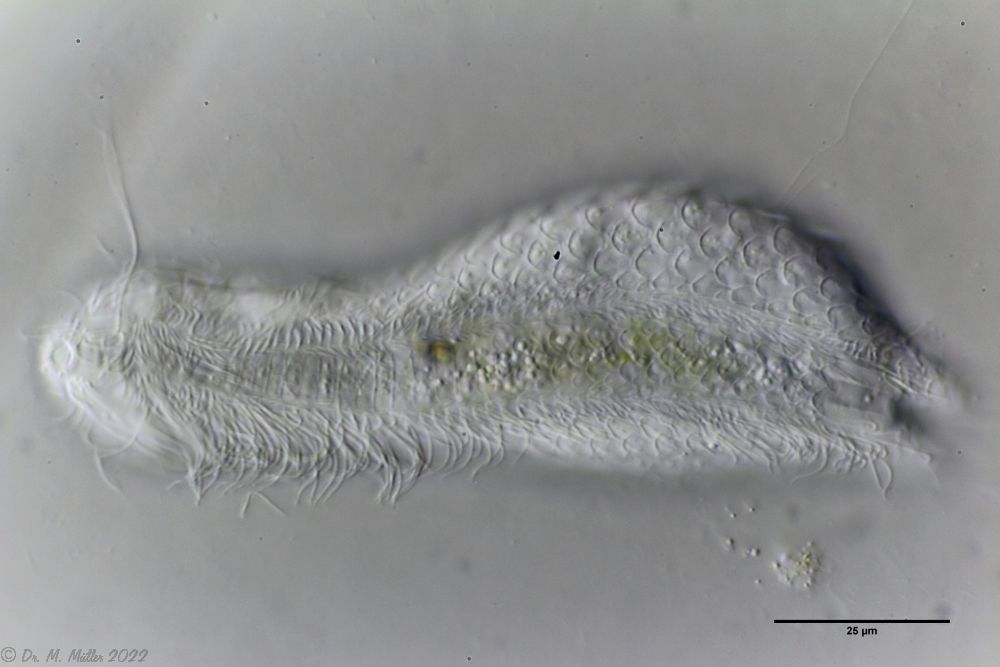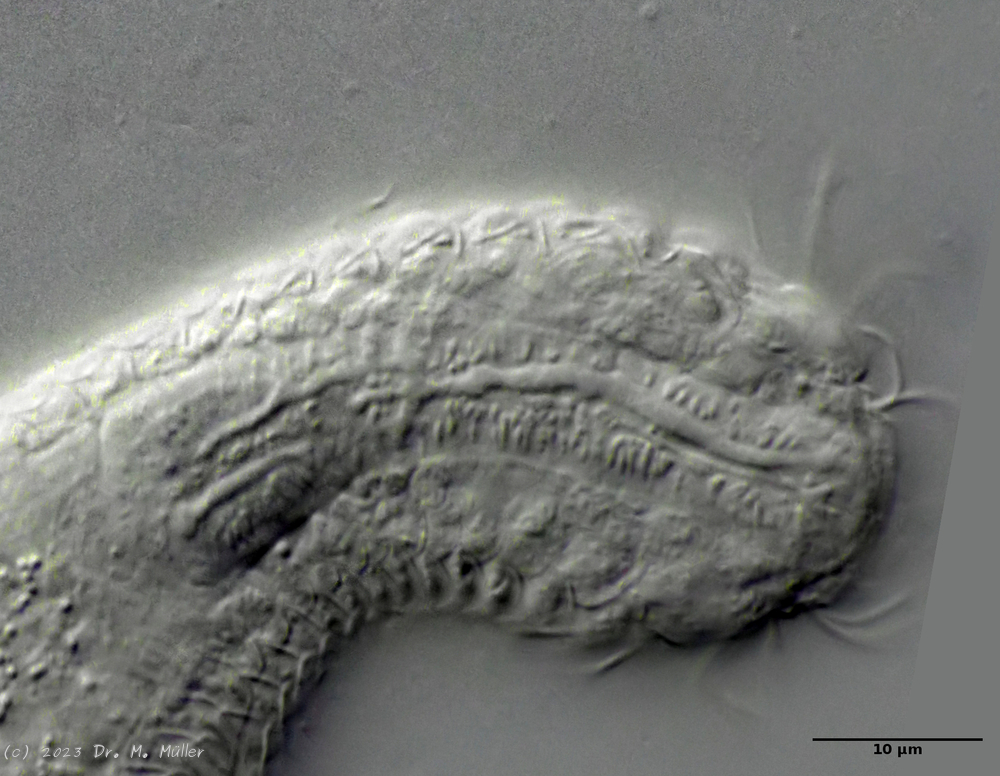Lepidodermella squamata

110 µm - 220 µm
Width:
28 µm - 52 µm
Width of the head ( five-lobed ):
24 µm - 35 µm
Width of the neck:
19 µm - 28 µm
Length of the furca:
18 µm - 27 µm
Adhessive tubes:
50% of furca
Pharyx ( cylindrical ):
28 µm - 56 µm
Diameter of the mouth ( round ):
7 µm
Dorsal scales:
7-9 rows of 25-30 very differently shaped, spikeless, strongly overlapping scales; head and trunk scales elongated oval with triangular / broadened front end (12 x 10 µm); neck scales transversely oval, short (5 x 9 µm); hypostomium: two cusps
Ventral scales:
ventral intermediate field with more than 20 transverse claspers below pharynx and 3-5 rows of quadrangular rounded, overlapping scales; 2 large terminal plates and some small, round scales; ciliary bands anteriorly mostly united
Oecology:
Frequent, found everywhere
Particularities:
well delimited by rectangular scale plates and large terminal plates; very variable and well studied species
Lepidodermella squamata is one of the best-studied gastrotrichs, as it is kept in culture in many laboratories around the world. However, the “cultivated forms” often differ significantly from the “wild forms”, as the animals, with their enormous generation rates of around 50 per year, can react quickly to the adaptive pressure of the habitat. L. squamata is therefore considered a very variable species. The photos shown here are of wild forms.
 Dorsal scales
Dorsal scales
 Ventral scales; large terminal plates; rectangular braces under neck
Ventral scales; large terminal plates; rectangular braces under neck
L. squamata is one of the many species of gastrotrichs in which the glandular ducts on the surface of the pharynx are clearly visible. These ducts connect individual gland cells in the pharyngeal wall and channel the secretions of the glands into a common excretory duct that pours into the animal’s oral cavity:
